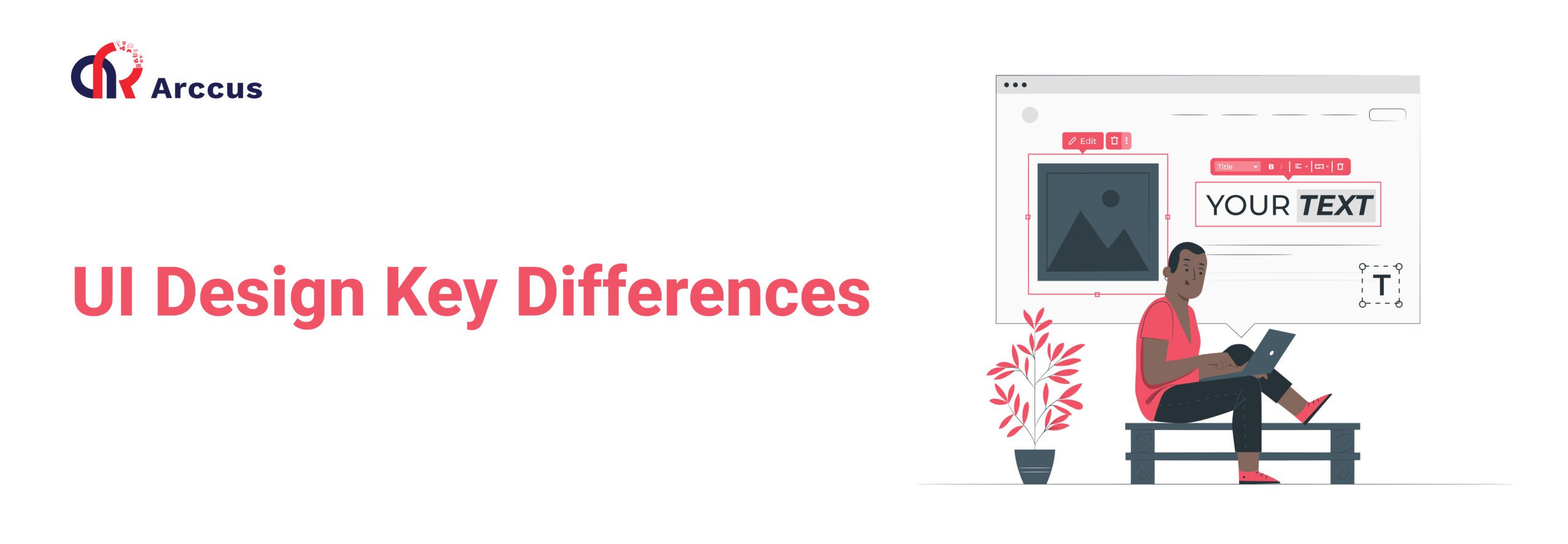iOS vs Android: UI Design Key Differences

Tailoring apps to the platform’s ecosystem enhances usability and provides a more engaging user experience. iOS vs Android UI designs have many differences which can be related in the app experiences.
Designing mobile apps for Android and iOS involves considering both the platforms’ distinct design guidelines and user expectations.
Let’s get to know the difference between android and iOS designs.
iOS vs Android Guidelines Importance
Android and iOS have guidelines to ensure consistency, usability, and a high-quality user experience across their ecosystems. These guidelines of android and iOS are critical for developers to follow for several reasons:
- Consistency Across Apps
Guidelines provide a standard for design and interaction, making it easier for users to navigate and interact with apps across the platform. Consistent design reduces the learning curve for users, as they can expect familiar patterns in different apps.
- Improved Usability
These guidelines are based on extensive research into user behavior and ergonomics. Following them helps developers create apps that are intuitive and user-friendly. They account for accessibility features, ensuring that apps work for a diverse range of users, including those with disabilities.
- Platform Identity
Design guidelines help maintain the unique look and feel of each platform. For instance:
– iOS emphasizes minimalism, clarity, and motion.
– Android emphasizes flexibility, modularity, and adaptive design.
This ensures that apps feel native to the platform, reinforcing brand identity.
- Faster Development
Android and iOS Guidelines provide ready-to-use patterns, components, and best practices, reducing the effort required to design and develop apps. Tools like Android’s Jetpack Compose and iOS’s SwiftUI are aligned with these guidelines, speeding up implementation.
- Quality Control
By adhering to guidelines, developers are more likely to meet the requirements for app store approval, reducing rejection rates during submission. Apps that follow guidelines are less likely to have usability or performance issues.
- Optimized for Hardware
Design guidelines consider the specific hardware and software features of the platform, ensuring apps take full advantage of capabilities like touchscreens, gestures, and device-specific interactions.
- Developer Ecosystem Support
Android and iOS guidelines are supported by official libraries, design kits, and tools, making it easier for developers to stay updated and produce high-quality apps.
Difference Between Android and iOS UI Design
The differences between iOS vs Android UI design primarily stem from their distinct design philosophies, guidelines, and user expectations. Here’s a breakdown:
1) Design Guidelines
Android:
– Follows Material Design guidelines, developed by Google.
– Emphasizes bold colors, responsive animations, and a lot of depth through shadowing.
– Uses a more flexible grid-based layout system, which supports a variety of screen sizes and aspect ratios.
iOS:
– Follows Human Interface Guidelines (HIG), developed by Apple.
– Emphasizes simplicity, clarity, and depth.
– Focuses on flat design with subtle gradients, clean edges, and a sense of lightness.
2) Navigation
Android:
– Commonly uses a navigation drawer (hamburger menu) and bottom navigation bars.
– Offers more flexibility in navigation structures.
– The Back button is always present as a hardware or software button.
iOS:
– Primarily uses tab bars for navigation.
– No dedicated hardware/software Back button; instead, gestures (like swipe from the left) or a back button in the navigation bar is used.
3) Typography
Android:
– Uses Roboto as the default system font.
– Text sizes and styles are typically more customizable across devices.
iOS:
– Uses San Francisco as the system font, optimized for readability on Apple devices.
– Typography is more uniform due to stricter guidelines.
4) Buttons and Controls
Android:
– Buttons often use bold, flat designs with a ripple effect for interactions.
– Floating Action Button (FAB) is unique to Android for highlighting primary actions.
iOS:
– Buttons are more minimalistic, often just text or icons.
– Actions may be placed in the navigation bar or contextual menus.
5) Icons
Android:
– Uses icons with bold, flat shapes.
– Supports adaptive icons that can fit into different shapes (circle, square, teardrop, etc.).
iOS:
– Icons are typically thinner and more minimalistic.
– Use a uniform rounded-square shape for app icons.
6) Gestures
Android:
– Gestures are optional and vary by manufacturer.
– Supports traditional navigation buttons as a fallback.
iOS:
– Gestures are more integral to navigation (e.g., swipe gestures for multitasking).
– Lacks a hardware navigation button on most devices since the iPhone X.
7) Screen Sizes and Aspect Ratios
Android:
– Supports a vast array of screen sizes and aspect ratios, requiring adaptive layouts.
iOS:
– Limited set of screen sizes and aspect ratios, making it easier to standardize designs.
8) Animations
Android:
– Material Design emphasizes smooth, meaningful animations (e.g., transitions and feedback).
– Often has bolder animations compared to iOS.
iOS:
– Animations are subtle and focus on enhancing user experience without being intrusive.
– Emphasis on continuity and natural interaction.
9) Status Bar and Notifications
Android:
– Notifications can include rich actions (e.g., reply, expand).
– Status bar icons are customizable.
iOS:
– Notifications are simpler but consistent across devices.
– Status bar layout is fixed and less customizable.
Also Read: Native vs. Hybrid Mobile App Development: Which is Right for Your Business?
CONCLUSION
Android’s design is customizable, bold, and versatile, catering to a wide range of devices. iOS focuses on consistency, simplicity, and elegance, ensuring a seamless experience across Apple products.
Each system’s design reflects its philosophy: Android emphasizes flexibility, while iOS prioritizes uniformity. With each having its own advantages and drawbacks the decision to choose among iOS vs android must be taken on the dependency of app users.